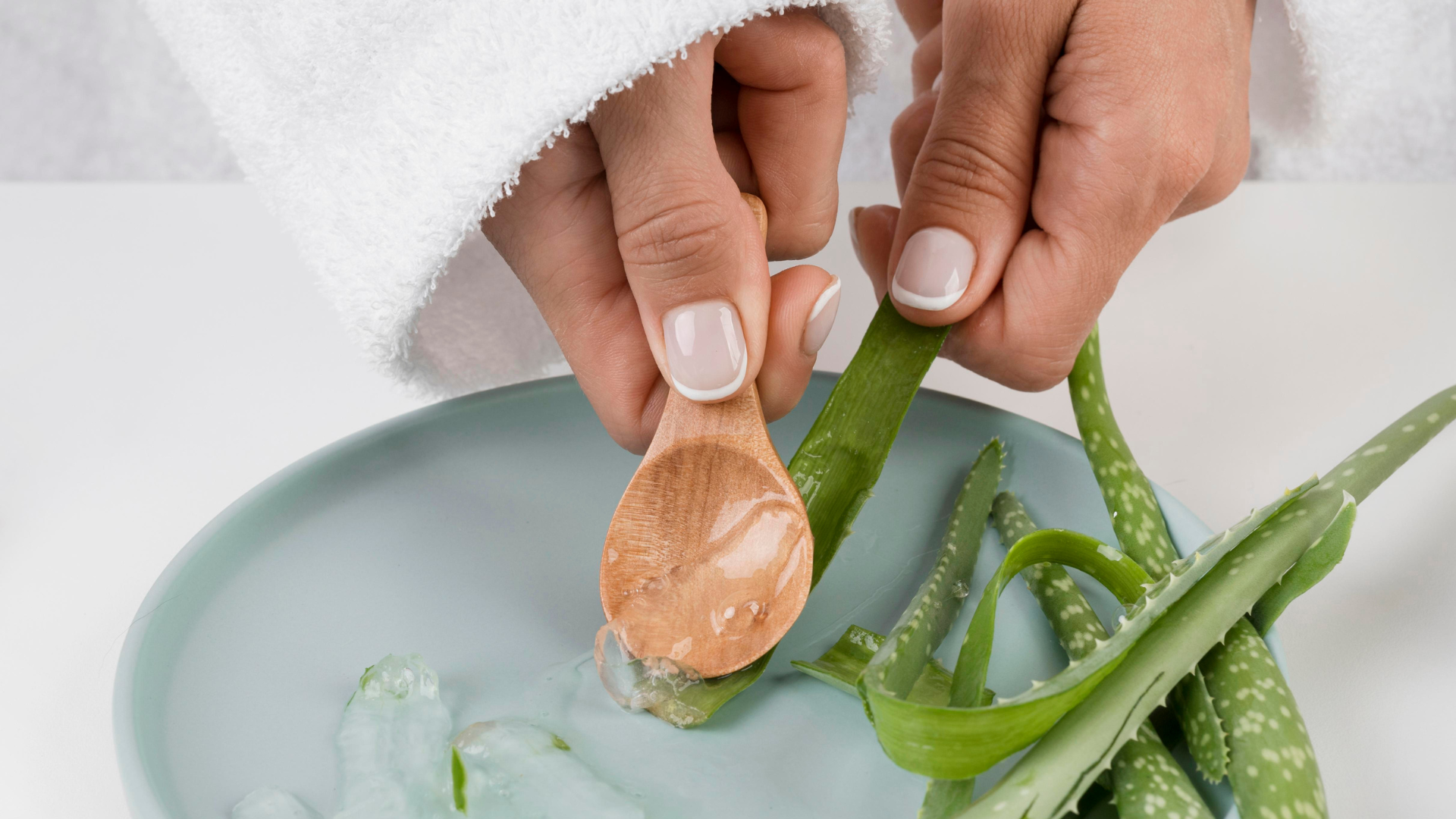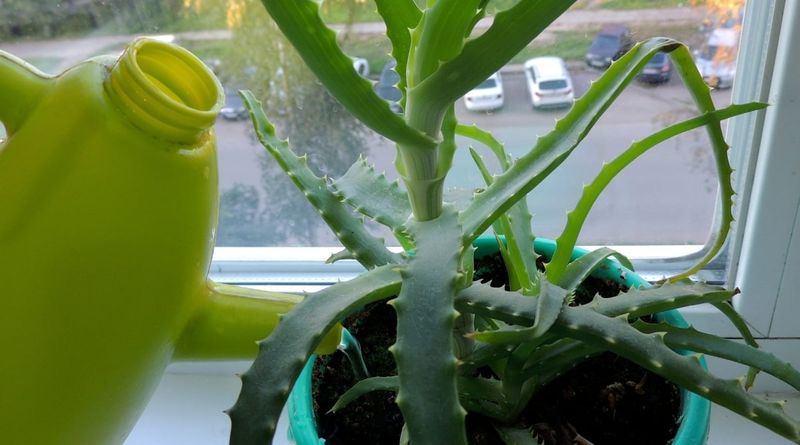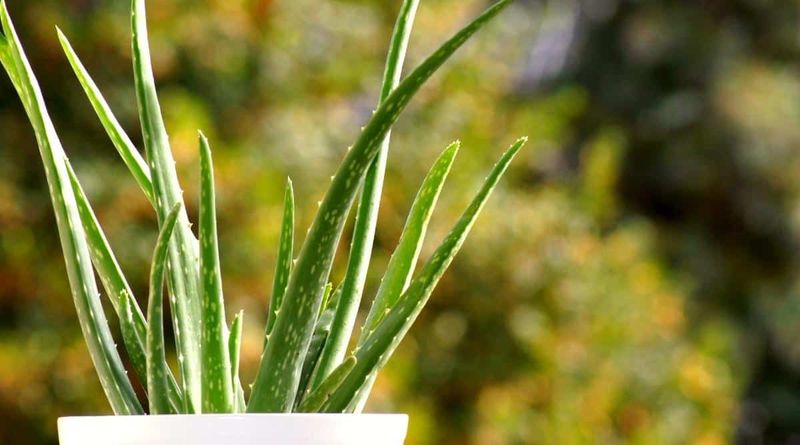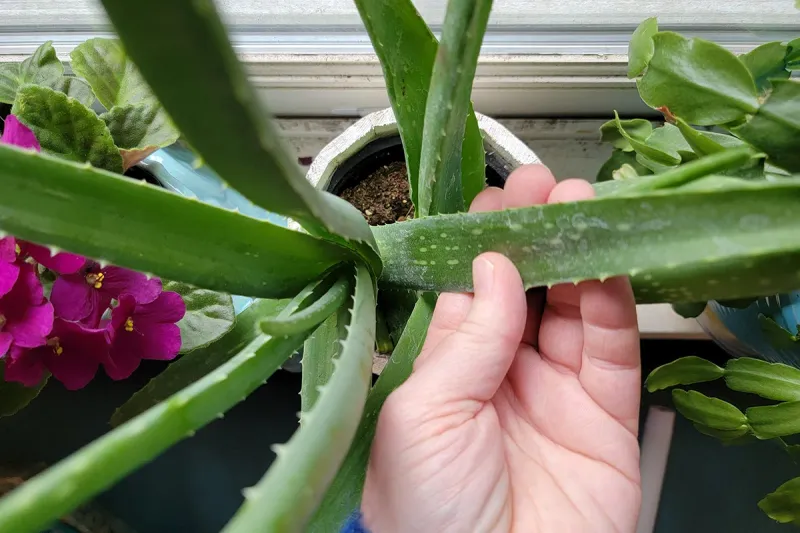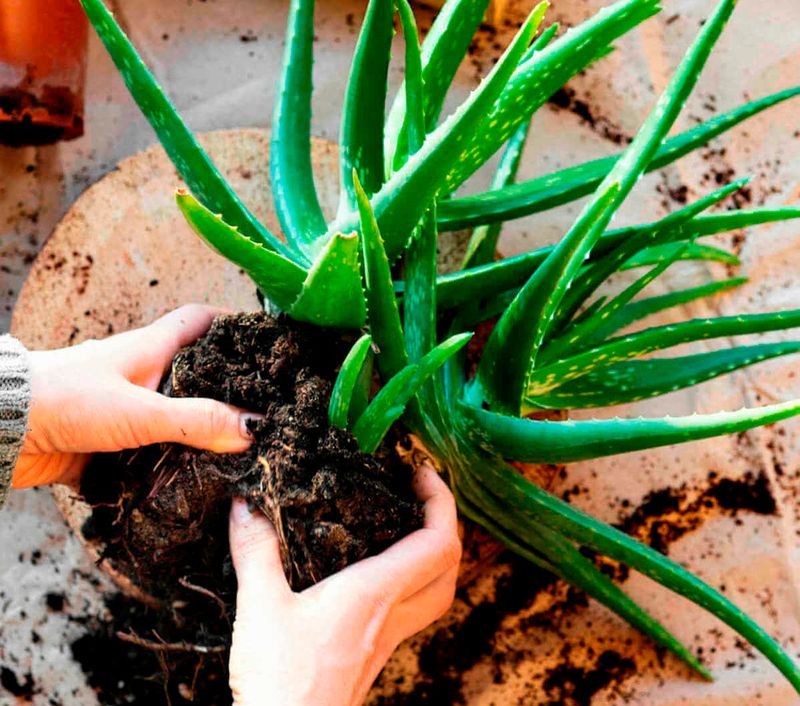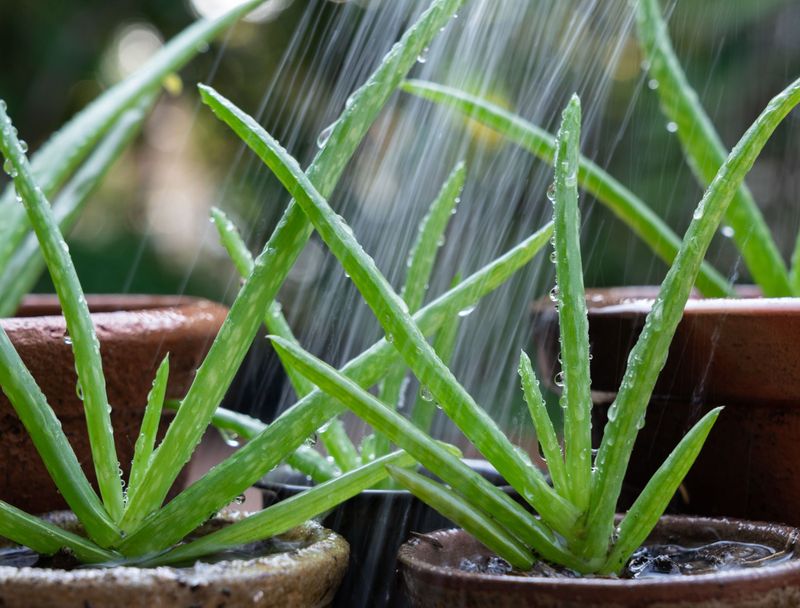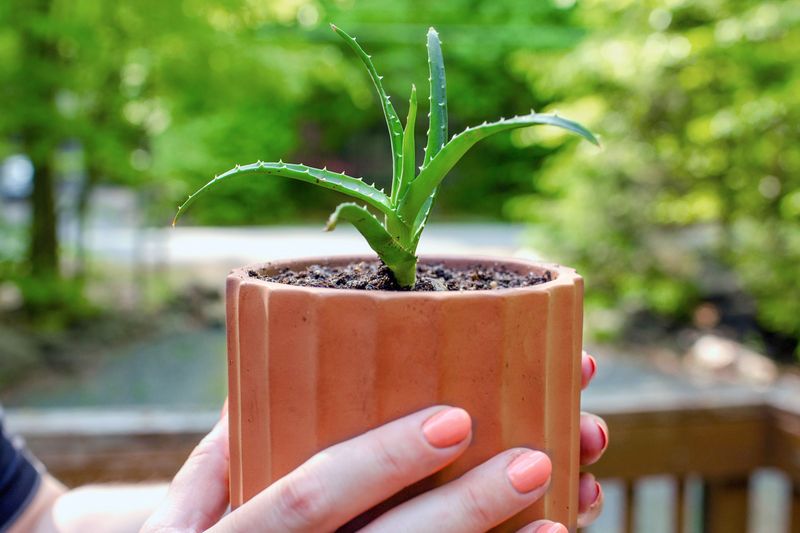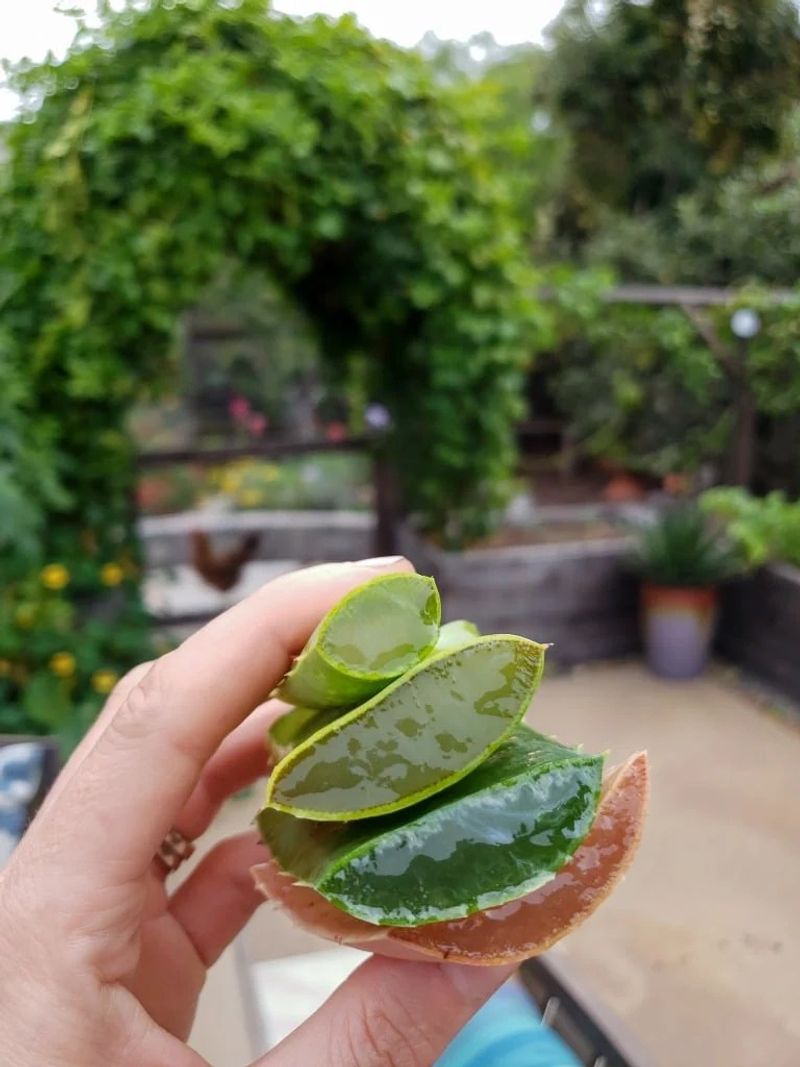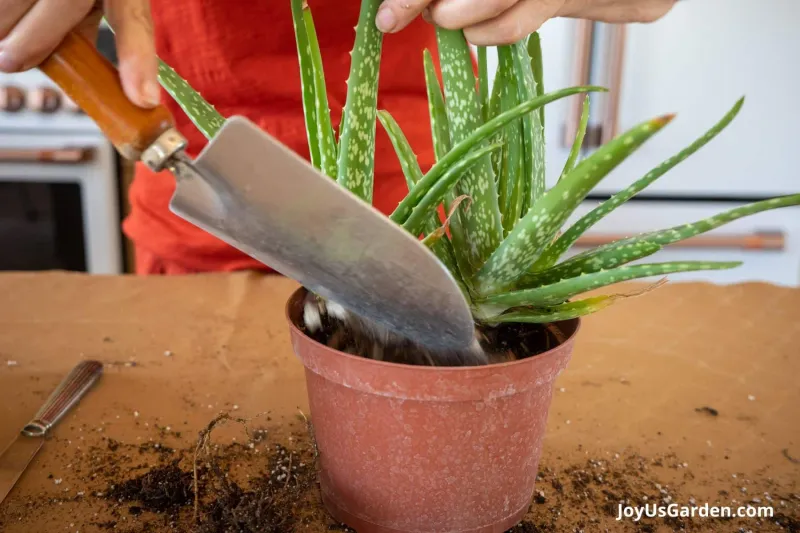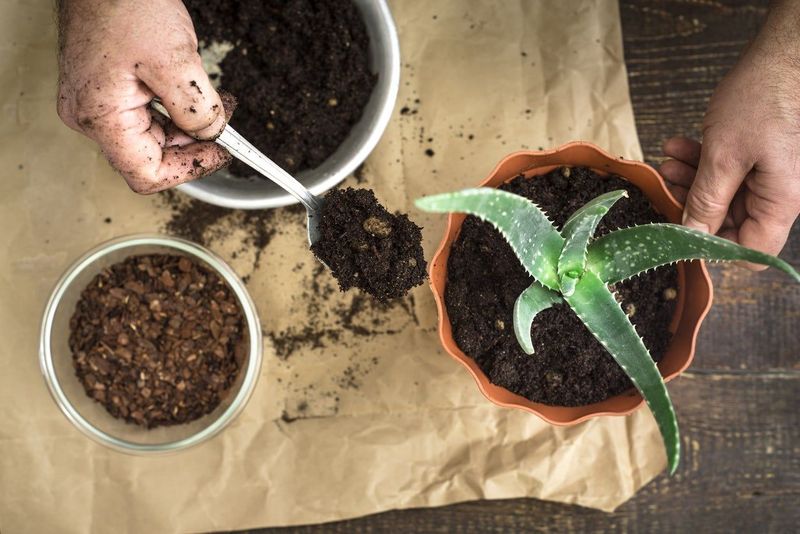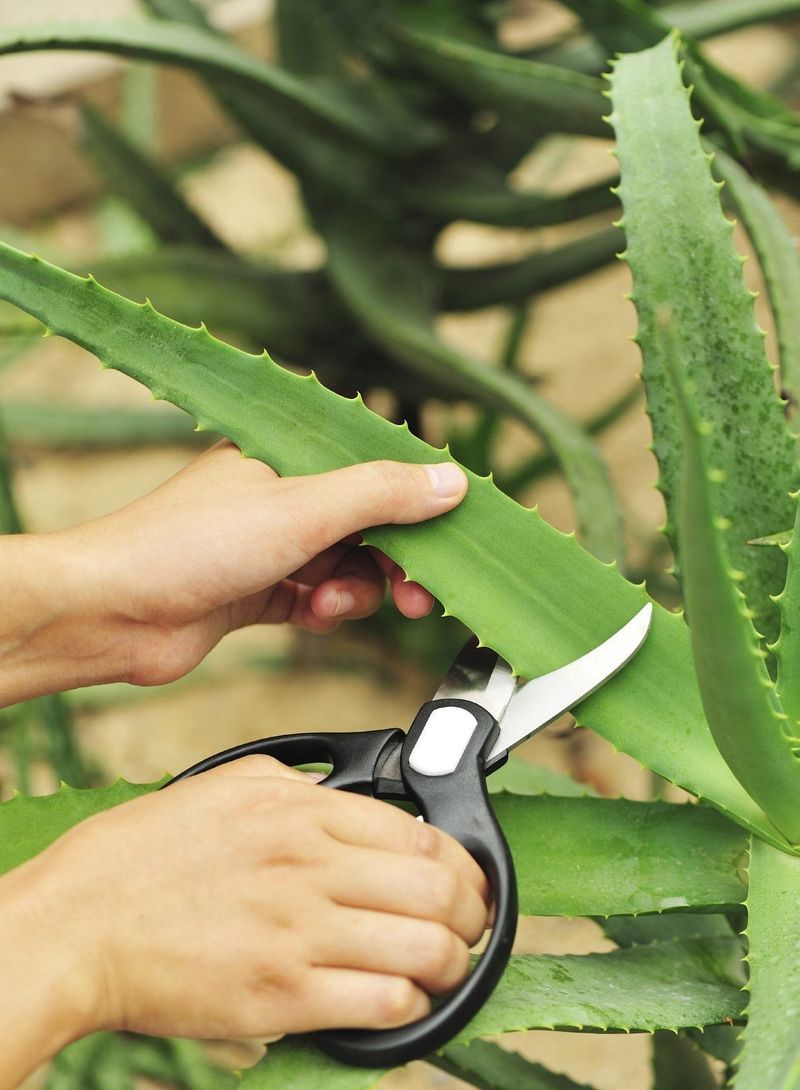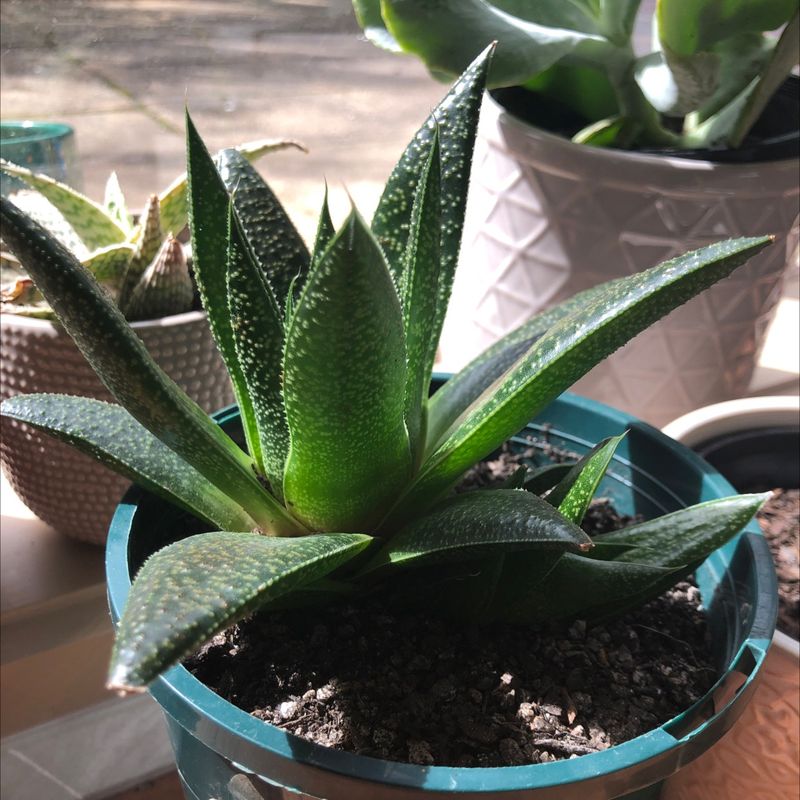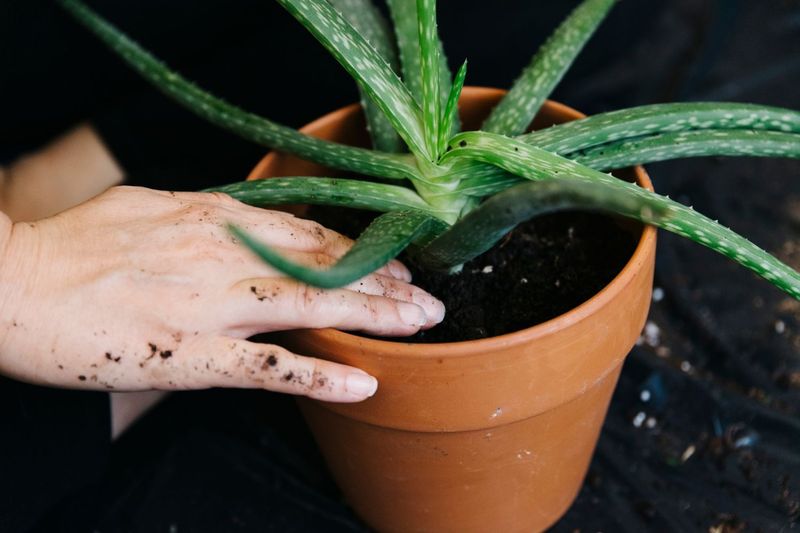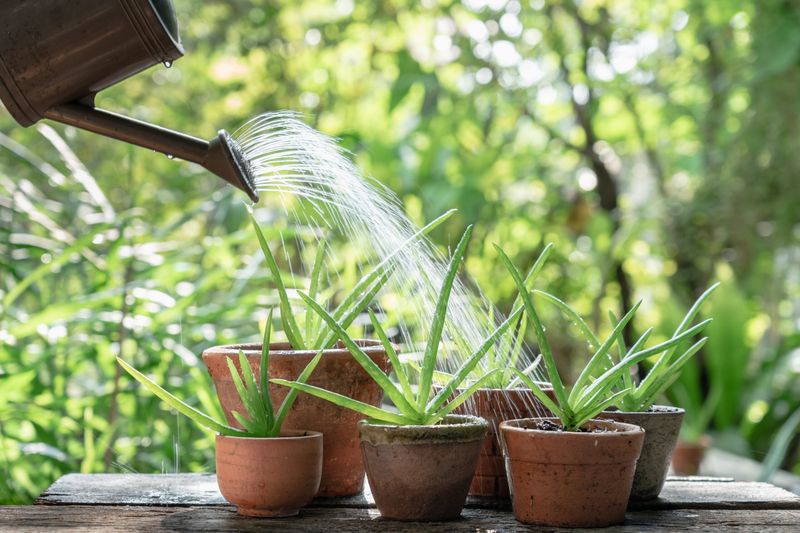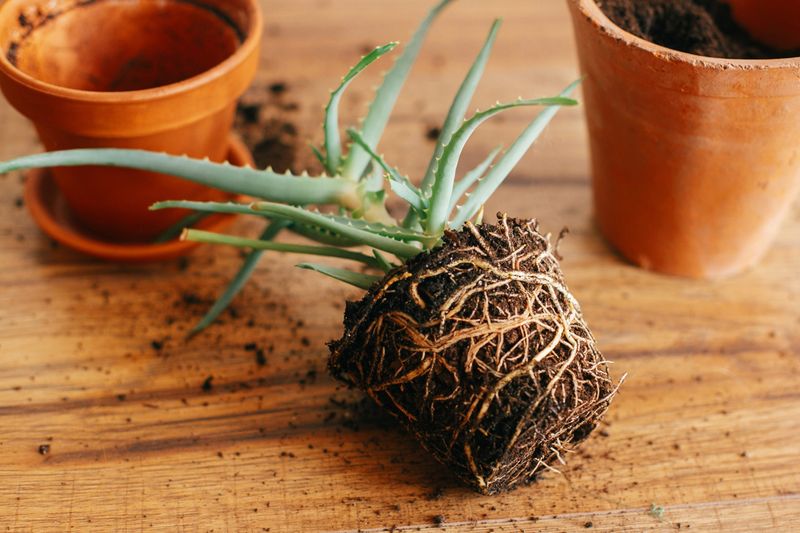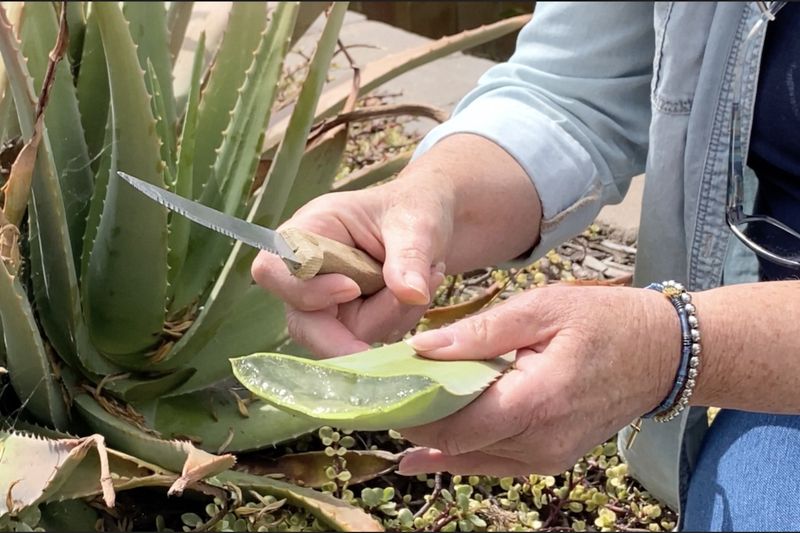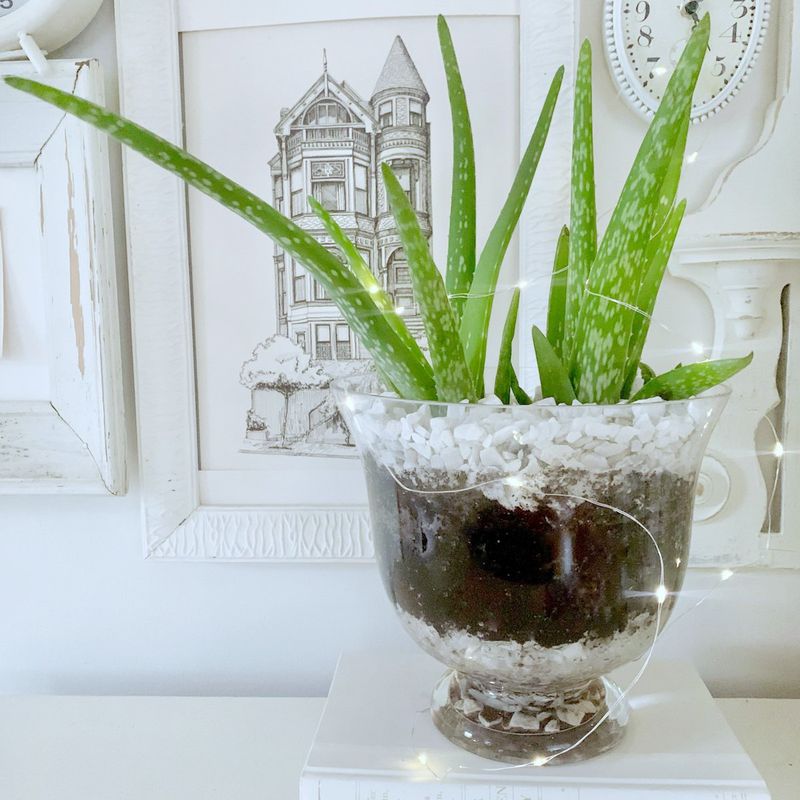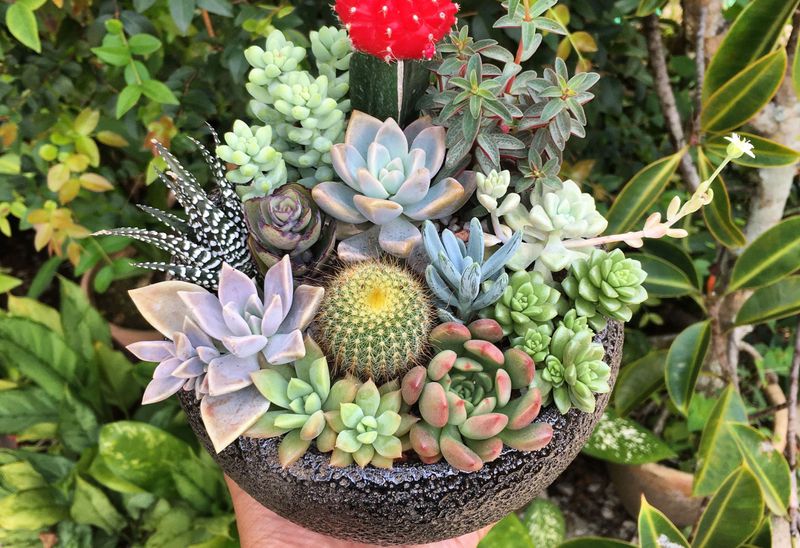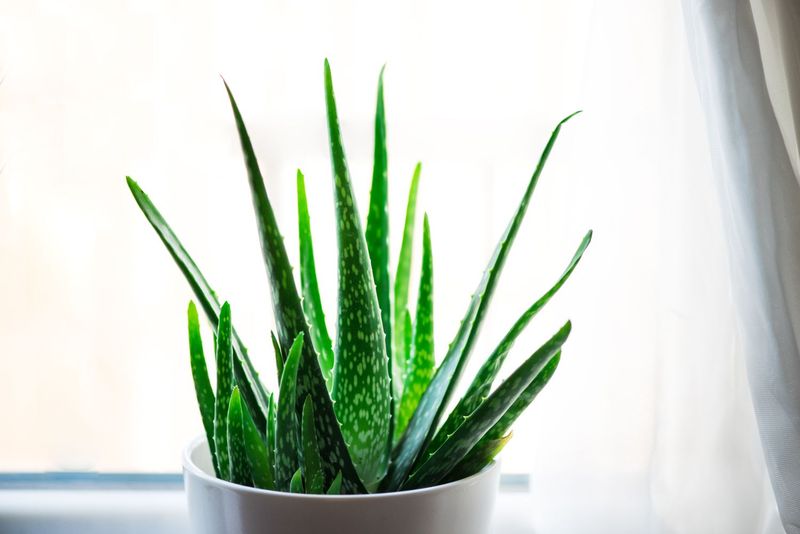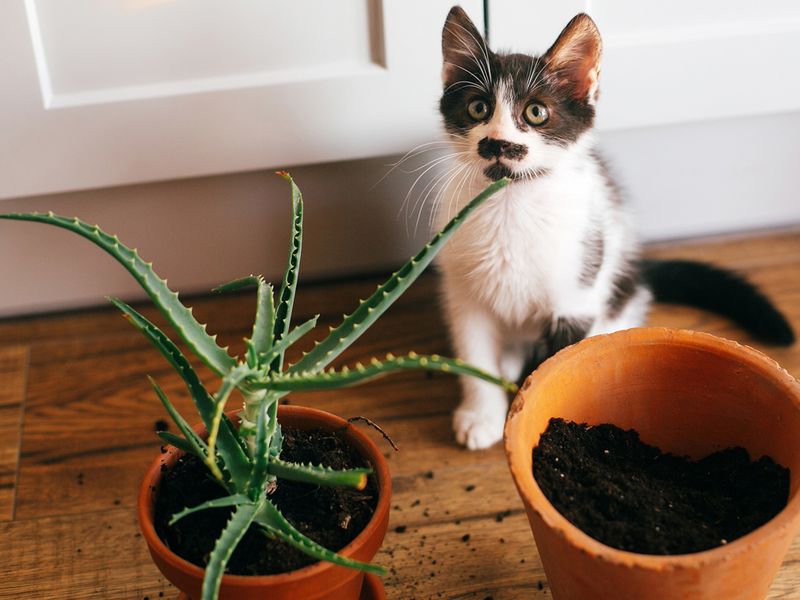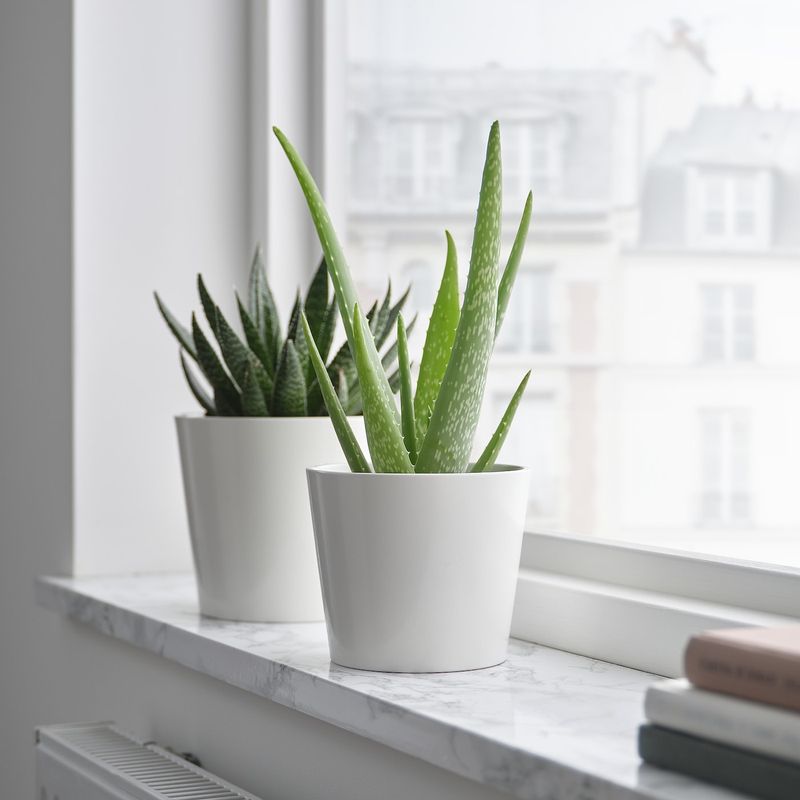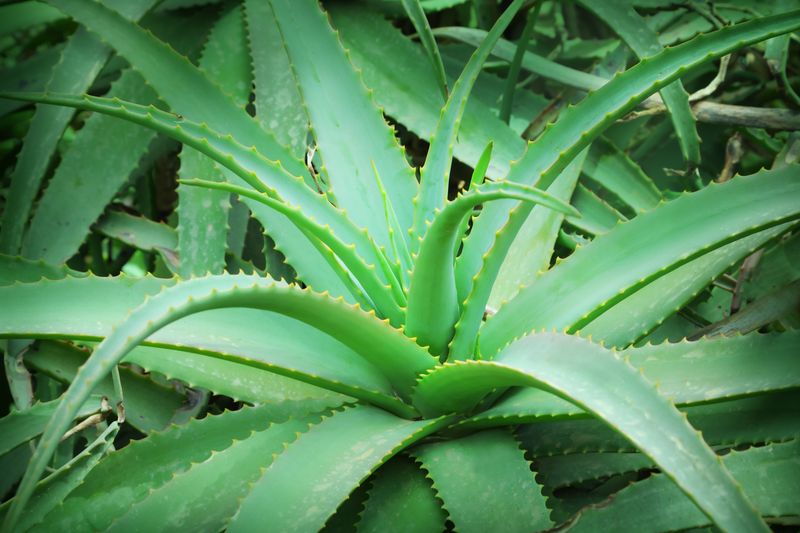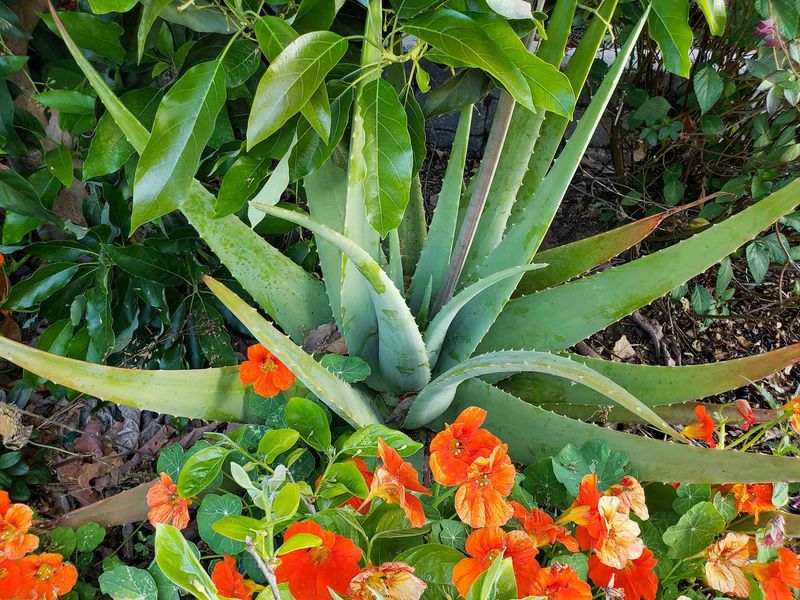Welcome to the quirky world of aloe plants, where every green thumb has its moments of triumph, and, let’s be real, a few aloe-mishaps along the way.
Trust me, I’ve had my fair share of “oops” moments (like the time I accidentally overwatered and nearly drowned my aloe. I swear it gave me a judging look).
That’s why I’m excited to share these 22 must-know tips that will turn your aloe care into a smooth sail. From quirky watering tricks to its sunbathing rituals (yes, your aloe loves a good tan).
1. Watering Routine
As an aloe lover, I’ve learned the hard way that when it comes to watering, less is definitely more. I used to water my aloe like it was a thirsty houseplant, only to watch it slowly start to look sad and droopy.
Turns out, these spiky beauties thrive on neglect! Now, I let the soil dry out completely before giving it a good, deep soak. I like to think of it as my aloe getting a little spa treatment rather than a binge drink.
And you know what? It’s been thriving ever since! Just remember, they’re low-maintenance divas who prefer a little space between drinks.
2. Sunlight Needs
Ah, the love for sunlight! Aloe plants adore soaking up those rays, but moderation is key. Too much direct sun, and they might end up sunburned, yes, just like us humans!
Place them in indirect bright light. You’ll notice their leaves turning greener with a healthy glow. Think of it as their happy place, lounging under a perfect sunlamp.
It’s their very own piece of paradise in your home.
3. Pest Control
Aloe plants may encounter unwanted guests like aphids and mealybugs. Don’t fret; a gentle wipe with a damp cloth or a spritz of insecticidal soap does wonders.
These pests dislike being disturbed. Consider it a mini spa day for your aloe, cleansing away the grime. The best part? It’s all-natural and keeps your plant squeaky clean.
So, whenever pesky visitors come knocking, you’ll be prepared with a gentle eviction plan.
4. Potting and Soil
Potting aloes is a bit like choosing the right home for a fussy friend. They prefer well-draining soil, like cactus mix, and a pot with drainage holes.
Terracotta pots are ideal as they allow the soil to dry out between waterings. Picture this: a cozy home with excellent ventilation.
Not only does it prevent overwatering, but it also gives your aloe a stylish abode. With the right setup, your plant will feel right at home in no time.
5. Temperature Preferences
Aloe plants are quite the temperature connoisseurs. They enjoy a warm environment but not too hot! Keep them in a room where temperatures range from 55°F to 80°F.
Think of it as their sweet spot. Too cold, and they’ll shiver; too hot, and they’ll wilt. It’s all about finding that perfect balance, like adjusting the thermostat on a chilly day.
When they’re comfortable, they’ll reward you with robust growth and healthy leaves.
6. Propagation Tips
Growing your aloe family isn’t just a gardener’s dream but a fun project! When your plant develops pups (baby aloes), gently separate them from the mother plant.
Use a clean knife to cut away any roots tangling them together. Place these pups in their own pots with fresh soil. It’s like sending them off to college with a starter kit.
They’ll soon grow and flourish under your care, ready to start their own aloe journey.
7. Gel Harvesting
I’ll admit, the first time I harvested aloe gel, I felt like a little botanical wizard. To get the best gel, I always pick a mature leaf (usually one that’s lower on the plant).
After cutting close to the base, I let the yellow sap drain out. Trust me, you don’t want that stuff on your skin. Then, it’s just a matter of peeling back the outer layer to reveal the translucent gel inside.
It’s like opening a little natural gift from your plant! I’ve used it for burns, minor cuts, and even skin irritation, and it’s been a lifesaver.
8. Repotting Schedule
Think of repotting as freshening up your aloe’s closet. Every couple of years, give them a new pot and fresh soil to stretch their roots.
It rejuvenates their growth and prevents them from becoming root-bound. It’s a bit like swapping out last season’s clothes for a new wardrobe.
Your aloe will appreciate the extra space to grow and continue thriving. Plus, it’s the perfect opportunity to check the health of the roots.
9. Fertilizing Tips
Aloes are low-maintenance when it comes to feeding. A diluted, balanced fertilizer during the growing months (spring and summer) is more than enough.
It’s like giving them a little energy drink to boost their spirits. But remember, less is more; over-fertilizing can be detrimental.
Treat them like your favorite plant-based friend who enjoys a light snack now and then. With the right nourishment, they’ll keep those beautiful leaves luscious.
10. Pruning Advice
Pruning isn’t just for aesthetics; it’s vital for your aloe’s health. Trim away any dead or damaged leaves to promote new growth. It’s akin to giving your plant a refreshing haircut.
Not only does this keep them looking sharp, but it also prevents disease spread. As you snip away the old, you pave the way for the new.
It’s a rewarding task that leaves both you and your plant feeling rejuvenated.
11. Lighting Adjustments
Adjustments to lighting can make all the difference. If your aloe starts showing signs of stress or browning, it might be crying out for a change.
Sometimes, a simple shift to a shadier spot or adding a sheer curtain can do wonders. It’s like them wearing sunglasses on a sunny day—protective and stylish.
Keep an eye on their cues, and soon you’ll become attuned to their lighting preferences. It’s all about that perfect spot.
12. Humidity Considerations
Aloes and humidity have a rather straightforward relationship. They’re not fans of overly humid environments, preferring dry air. Picture them as desert dwellers craving arid conditions.
If your home’s humidity tips the scale, consider using a dehumidifier. It’s a small adjustment but can lead to significant changes in their well-being.
They’ll thank you with healthier growth and more robust leaves, basking in their preferred dry climate.
13. Seasonal Care
Each season requires a different care approach. During winter, reduce watering as aloes enter a dormant phase. Consider it their hibernation period.
They require less attention, making it a low-maintenance time for you. On the flip side, spring and summer awaken their thirst, so adjust your care routine accordingly.
It’s like tuning into nature’s rhythm, aligning your actions with the seasonal dance. Your aloe will flourish in every cycle.
14. Root Health
Repotting my aloe has become one of my favorite little rituals. I’ve learned that the roots are the real backbone of aloe health. So when I repot, I always give them a quick check-up.
Healthy roots should be white and firm, a good sign that my aloe is thriving. If I spot any mushy or brown ones, I don’t hesitate to trim them off.
This not only keeps it healthy but ensures that nutrients are getting where they need to go. It’s like a behind-the-scenes peek at the magic that keeps my aloe so happy and vibrant.
15. Leaf Care
Leaf care may seem trivial, but it makes a big impact. Dust can accumulate, blocking light absorption. Gently wipe leaves with a damp cloth to keep them clean.
Consider it a leaf facial, restoring their natural shine. This simple task enhances photosynthesis and keeps your plant looking pristine.
It’s an easy routine that leaves your aloe more radiant and healthy. Plus, it’s quite therapeutic for both you and your plant.
16. Container Choices
Choosing the right container is more than just aesthetic appeal. Ensure your pot has drainage holes to avoid waterlogging, which can lead to root rot.
It’s like selecting the perfect pair of shoes—not too tight, with room to breathe. The right pot allows excess water to escape, maintaining optimal soil conditions.
It’s a stylish yet practical choice that keeps your aloe happy and healthy, ready to put its best foot forward.
17. Companion Plants
Aloes are social and thrive with the right companions. Pair them with other succulents that share similar care needs. It’s like building a harmonious neighborhood of plants.
They enjoy each other’s company, creating a microclimate that’s nurturing for all. Plus, it makes for an eye-catching display.
Imagine a succulent gathering, each plant contributing to a lively scene. It’s all about finding the perfect plant pals for your aloe.
18. Travel Care
Got a trip planned? Aloes can survive a little neglect, but don’t leave them entirely. Before you go, water them well and move them away from direct sun.
Consider it their mini-vacation. Leaving a note for a friend to check occasionally works wonders. This way, you’ll return to a happy, healthy plant.
It’s a simple preparation that ensures your aloe doesn’t miss you too much. Peace of mind for you, comfort for them.
19. Pet Safety
Having pets and aloes in the same house can be a bit of a balancing act, but it’s totally doable! I’ve learned that while aloe is mildly toxic if ingested, most pets instinctively avoid it.
Still, to be on the safe side, I always make sure my aloe is out of reach. Either on a high shelf or behind a little barrier.
It’s such a simple fix to ensure my pets can roam freely without worrying about curious nibbles. It brings peace of mind to my indoor jungle, knowing both my furry friends and plants are happy and safe.
20. Decorative Use
Beyond its health benefits, an aloe plant makes a stunning decorative piece. Its modern look fits any style, from minimalistic to bohemian.
As a centerpiece, it adds a touch of elegance without overwhelming the space. It’s like having nature’s art at your fingertips, ready to enhance any setting.
Your guests will admire not only its beauty but also the serene ambiance it creates. A true testimony to the plant’s versatile charm.
21. Cultural Significance
Aloes hold cultural significance across various traditions, revered for their healing properties. In some cultures, they symbolize protection and healing.
Imagine a plant with stories that span generations, bridging past and present. This adds a layer of richness to your aloe care routine, knowing you’re nurturing a plant with such a legacy.
It’s not just about growing a plant; it’s about embracing a piece of history within your home.
22. Environmental Impact
Aloe plants offer more than beauty—they contribute to a healthier environment. Known for their air-purifying abilities, they make indoor spaces more refreshing.
Consider them your green partners in creating a cleaner home atmosphere. It’s amazing how something so small can have a significant impact on your living space.
Embrace their natural role as air quality enhancers, making every breath more rejuvenating. A wonderful plant with benefits that go beyond the surface.

